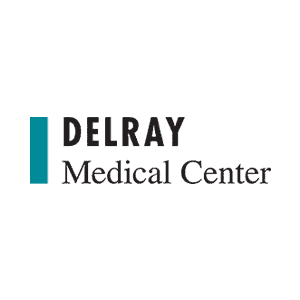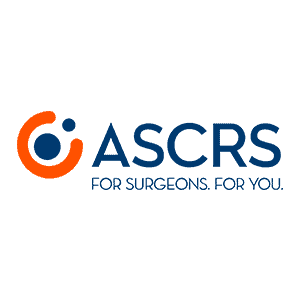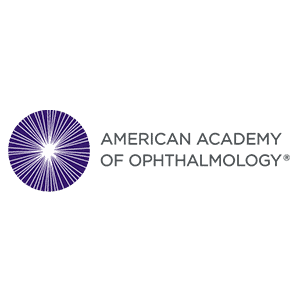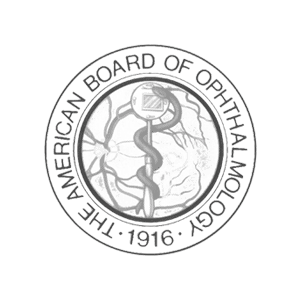Common Retina Questions
What does the retina do?
The retina is a thin, transparent film of nerve tissue lining the back of the eyeball. One can think of this tissue as the film in a conventional camera – the part responsible for processing light and color – that sends the signal to the brain where the image is “processed.”
The retina needs a very specific set of conditions to function properly.
- Light needs to be able to reach the retina without any opacities or distortion. Refractive errors, corneal scars, and cataracts and impede this process.
- The retina needs to lie perfectly flat without any wrinkles or abnormal areas. Certain conditions like prior eye injury or surgery, inflammation, or bleeding can distort the anatomy of the retina and cause problems in vision.
- The retina needs consistent blood supply. Variations in blood pressure, ischemia, bleeding, or other ailments can interrupt the retina’s blood flow and potentially cause irreversible damage.
- The retina itself must function properly. Genetic diseases, advanced age, metabolic problems like diabetes, or other problems can alter the ability of the retina to process light normally.
- The brain needs to receive the retina’s signal without interruption. Once the rods and cones in the retina are stimulated by light, they send a detailed signal through millions of nerve axons to the visual cortex in the brain. Therefore the retina, nerve tissue, and brain must all be healthy and functionally optimally for normal vision.
How are retina problems diagnosed?
Your Cohen Laser & Vision Center ophthalmologist can diagnose your retina disease after specialized testing, such as:
- Optical coherence tomography (OCT)
OCT is an imaging tool that takes highly detailed pictures of your retina. Your ophthalmologist might diagnose retina problems like holes or swelling in the macula, the part of your retina responsible for central vision. - Fluorescein angiography
In this test, your ophthalmologist injects a special dye into your arm or hand. This dye makes your retinal blood vessels stand out clearly on images of your retina, so your ophthalmologist can identify problems like AMD or other issues. - Amsler grid
An Amsler grid is a grid that you view, and then tell your ophthalmologist if there are any irregularities. If you have a retina problem, the grid might look broken, partially faded, or otherwise distorted. Often this is helpful for identifying AMD. - Indocyanine green angiography
An indocyanine green angiography also uses dye, which your ophthalmologist then uses an infrared light to illuminate. Imaging reveals both the blood vessels in and behind your retina. - Ultrasound
An ultrasound allows your ophthalmologist to see your retina so they can check for tissue changes, such as tumors.
Other advanced tests, including CT and MRI, might be helpful in identifying retina issues. Your Cohen Laser & Vision Center ophthalmologist can diagnose AMD, diabetic retinopathy, PVD, and most other retina problems on-site using the latest diagnostic equipment.
What is the treatment for retina problems?
Retina treatments vary widely based on the stage of the disease, your symptoms, and what kind of damage is already present. With AMD, the focus is on preventing progression and correcting damage where necessary. This might include laser surgery, eye injections, or other eye surgery for wet AMD.
For diabetic retinopathy, you must manage your diabetes efficiently, along with your specific eye treatment. Treatment may include injections, laser procedures, or surgery if needed.
PVD, in which your vitreous pulls away from your retina, can cause flashes of light and floaters in your vision. It’s not a threat to your sight, but can sometimes turn into a retinal tear or detachment requiring laser treatment or surgery.
What is macular degeneration?
Macular degeneration is one of the most common causes of age-related vision loss. It generally occurs after age 60 and is associated with progressive decline in central vision over time.
Age-related macular generation is not curable, but it can be managed. Dry AMD involves the build-up of yellow deposits under the retina called drusen, which can cause damage to photoreceptors (rods and cones) over time. Treatment for dry AMD depends on a healthy diet rich in antioxidants, avoiding UV light, and not smoking. Special vitamins called AREDS-2 have been shown to slow the progression of Dry AMD in those with moderate disease.
Wet AMD can be more severe than dry, but not always. Wet AMD is named for the fluid and blood that collects under the retina when the aforementioned drusen causes a breakdown in the barrier between the retina and underling blood vessels. Wet AMD requires a trained specialist to administer anti-VEGF medications (e.g. Avastin, Eylea, Lucentis). If you are diagnosed with this condition, the doctors at CLVC will coordinate care appropriately.
If you have a family history of macular degeneration or are concerned about your own retina status, a thorough dilated eye exam is necessary. Additionally, CLVC offers a new genetic test that screens for the 4 most common genes and can determine possible progression risk. This test is developed by Visible Genomics and is not covered by insurance. While such a test can provide additional information that may help coordinate follow-up care and alleviate uncertainty, without genetic therapies approved for AMD it is not yet used in any treatment capacity.
What are common retina problems?
The retina is a complicated area of the eye, due to its fragility and highly specified cellular anatomy. Below are some of the more common conditions we can diagnose and help treat here at CLVC:
Age-related macular degeneration: This condition causes central blurring and obscuration over time. There are generally two types of macular degeneration: dry and wet. Dry (AMD) is incurable, but can be slowed by close monitoring, avoiding sunlight and smoking, and taking special vitamins like AREDS2.
- Learn more about Dry AMD and AREDS2 vitamins here.
- Wet AMD involves a breakdown between the neurosensory retina and the underlying vascular supply, causing leakage of fluid and blood into or underneath the retina. When identified, this usually requires timely administration of injected medications called anti-VEGF molecules. We work with excellent local retina specialists throughout South Florida to administer such medications if necessary.
Diabetic retinopathy: Longstanding high blood sugars and poorly controlled diabetes mellitus can cause weakness in the integrity of tiny vessels called capillaries in the retina. Treating diabetic retinopathy varies depending on severity, and may involve any of the following:
- Systemic medications
- Special lasers or surgery of the retina tissue
- Injected medications into the eye under the care of a retina specialist
Patients with diabetic retinopathy need close supervision by an ophthalmologist, internist, and often an endocrinologist.
Epiretinal membrane (ERM): An ERM is a thin layer of material over the retina that causes distortion of the normal retinal anatomy. While the cause is unknown, this condition can worsen after injury or surgery, inflammation, or old age.
- In mild cases, an ERM may have no visual affect. In moderate or severe cases, the distortion can cause visual disturbance or even fluid accumulation within the retina itself.
- Treatment of a severe ERM may require surgery from a skilled retina surgeon.
Retinal detachment: It is possible to have small holes or tears in the retina, without a true detachment. These focal areas of damage may be treated with special barrier lasers. The signs and symptoms of a retinal hole or tear are generally like those of a detachment:
- Worsening or new floaters
- Flashes of light or shimmering
- Shadows or darkened areas of vision
- Blurry vision
When the retinal tissue separates from the lining of the back of the eye, this condition is called a retinal detachment.
There are three general types of retinal detachments, and the severity of each depends on the location and the amount of damage evident.
- Rhegmatogenous (tear). This type of detachment occurs from trauma or focal damage causing a tear in the retina which allows fluid to flow underneath and cause a detachment.
- Serous (fluid). Systemic conditions, inflammation, or even medications can cause fluid to accumulate under the retina resulting in vision loss.
- Traction (adhesions): Longstanding inflammatory debris can consolidate forming a tight meshwork of scar tissue that can pull and distort the retina. This is most common in diabetics and is often difficult to treat.
What are floaters?
Floaters are tiny obscurities in the vitreous cavity of the eyeball. The vitreous is a gelatinous, clear fluid that occupies the central cavity of the eye and provides structure and transparency so the eye can function properly.
Occasionally, through injury or age-related changes, the vitreous itself can change its viscosity and separate from the retinal lining in the back of the eye. This causes the vitreous itself to wrinkle and fold creating the sensation of floaters. In rare cases, the retina itself can be damaged by a vitreous detachment (posterior vitreous detachemtn or “PVD” in common vernacular) and this can be a sight-threatening condition.
If you are experiencing new floaters, flashes of light, or shadows in your vision it’s very important you receive a thorough, dilated exam exam. Chronic floaters are generally observed and may improve with time. However, special lasers or surgery can also be used to minimize floaters if certain circumstances.
What if I need highly specialized retinal treatments?
The Cohen Laser & Vision Center team works closely with a team of retina specialists who can manage complex cases. Your retina problem has solutions, and the Cohen Laser & Vision Center team will help you find them.
Use online scheduling or call the Boca Raton office to book today. The practice also serves those in Delray Beach, Deerfield Beach, Pompano Beach, Boynton Beach, and all of Palm Beach County.
Want More Information?
Contact us today so we can answer your questions.
Call us now at (561)981-8400, or request an appointment online here.











